Thailand is one of the world’s top travel destinations, owing to its tropical beaches, exquisite cuisine, and golden temples. Famed for its hospitality, it’s often called the Land of a Thousand Smiles.
But different parts of Thailand appeal to different travellers — from wide-eyed adventurers at the start of a backpacking trip to package tourists on a lazy beach holiday.
So to get the experience you want, you have to know where to go!
Where to go in Thailand
In a hurry? Here are some quick answers to get you started.
| Activity | Destinations |
|---|---|
| Temples & history | Temples in Chiang Mai, Sukhothai Historical Park, Ayutthaya ancient ruins |
| Resorts & beaches | Phuket, Pattaya, and Koh Samui have the most commercial large-scale resorts. Koh Chang Archipelago, Krabi, and Koh Phangan are some smaller alternative options. |
| Nature | Khao Sok National Park, trekking in northern Thailand, Erawan National Park, Khao Yai National Park |
| Partying | Bangkok, Koh Phangan, Pai, Koh Phi Phi, Koh Chang (specifically Lonely Beach). These offer lots of nightlife for younger travelers, though the party scenes are (usually) also easily avoided. |
| Kids & family | Koh Lanta is a chill and family-friendly island. Chiang Mai, Krabi, and Kanchanaburi have great activities and are nice and laidback. |
| Calm, less touristy | Mae Hong Son region, Chiang Dao, Kanchanaburi, or the Koh Chang archipelago (e.g. Koh Kood), Phayao, Isaan region, Sangkhlaburi. |
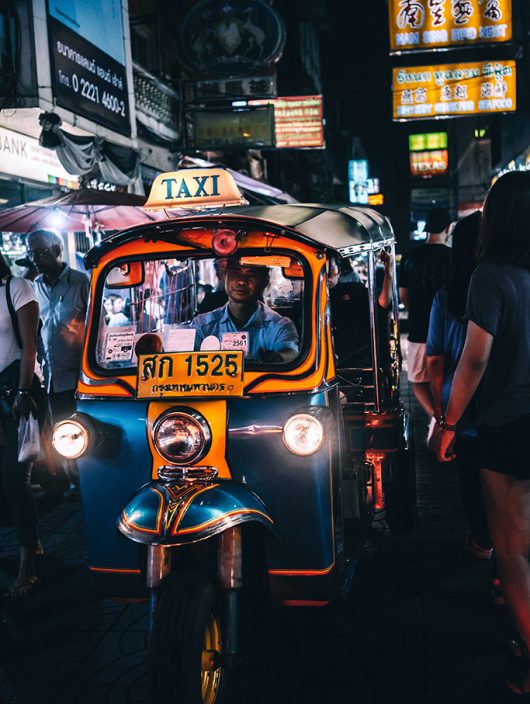
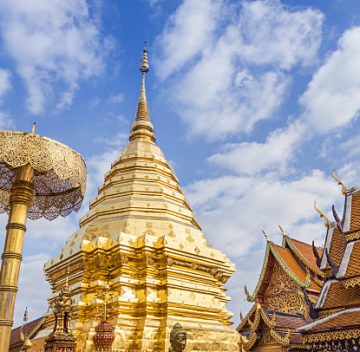
Thailand itineraries
If it’s your first time in Thailand, then you might enjoy some of the tried-and-true travel routes that are sure to give you a great experience.
For a quick 1-week loop focused on culture and nature, consider doing Bangkok, Kanchanaburi, Ayutthaya, and Khao Yai National Park. Since these are all close to each other, you won’t waste too much time in transit.
Alternatively, you can do a 1-week cultural loop in northern Thailand, starting in Chiang Mai.
For some ideas for a longer route, you can check out this Thailand itinerary for 2 to 4 weeks, which includes the cultural north and islands in the south.
When creating your route, it’s often a good idea to go to the north first.
You will find more cultural and natural attractions there, so many people think it’s nice to tick these off the list before heading to the southern coast.
If you go to the beaches straight away, you might just get stuck in a hammock and not do anything else!
Top places to visit in Thailand
Even though the best places to visit in Thailand will always depend on your personal interest and travel style, many travelers would agree the following are all among the highlights in Thailand.
Central Thailand
You are likely to arrive in the capital Bangkok, which is located smack in the middle of central Thailand. Besides the capital, it’s worth highlighting the archaeological site of Ayutthaya, and the gentle riverside town of Kanchanaburi makes for an easy escape from buzzing Bangkok.
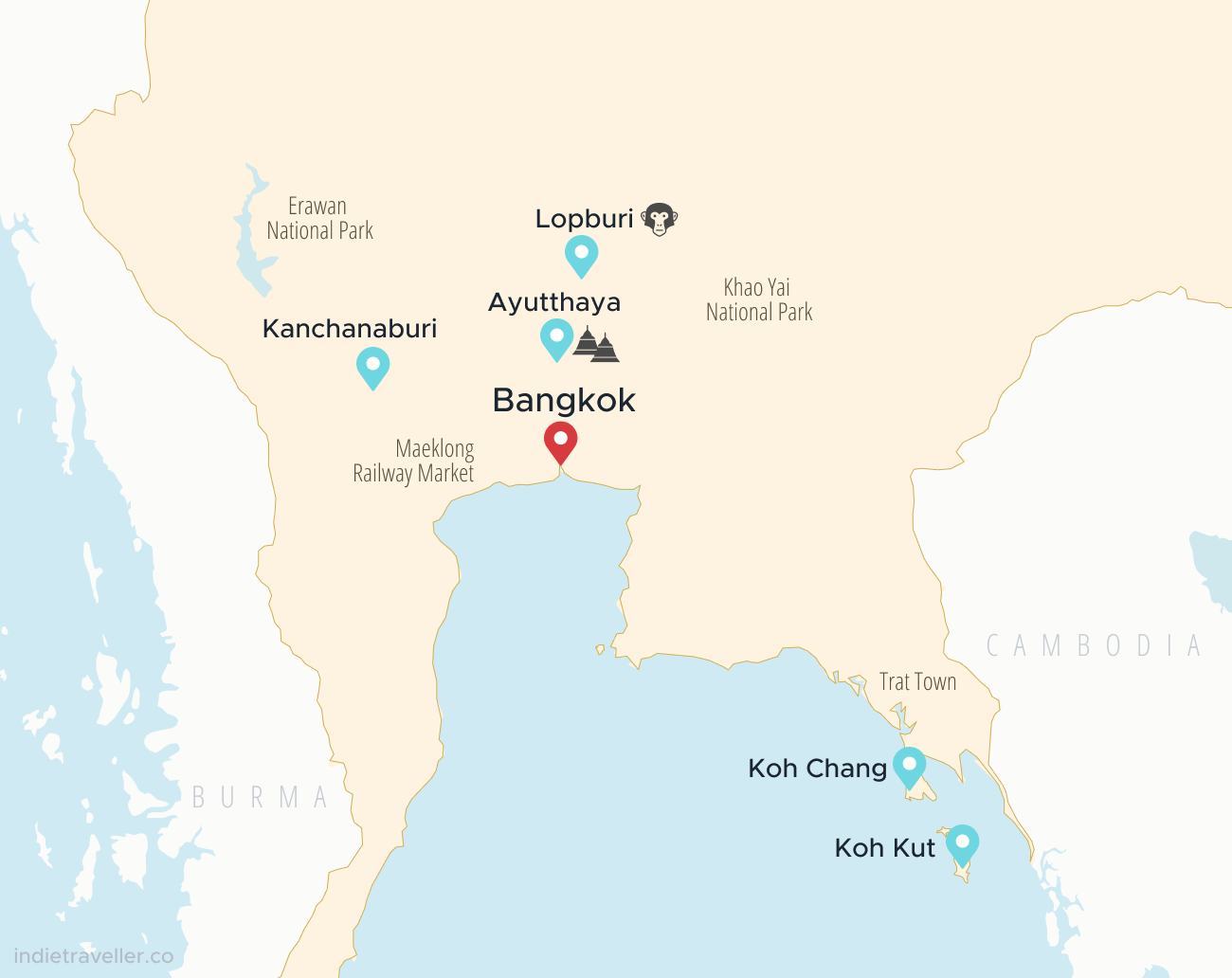
Bangkok
Enjoy the hustle-and-bustle of the Thai capital
Some tourists arrive in Bangkok believing it to be way too chaotic, busy, or stressful, immediately escaping straight to the islands. I think this is a real shame because Bangkok is an amazing city to explore! Just expect it to be chaotic and keep an open mind and Bangkok can surprise you very positively.
With so many things to do in Bangkok, you could easily spend several days in the capital.
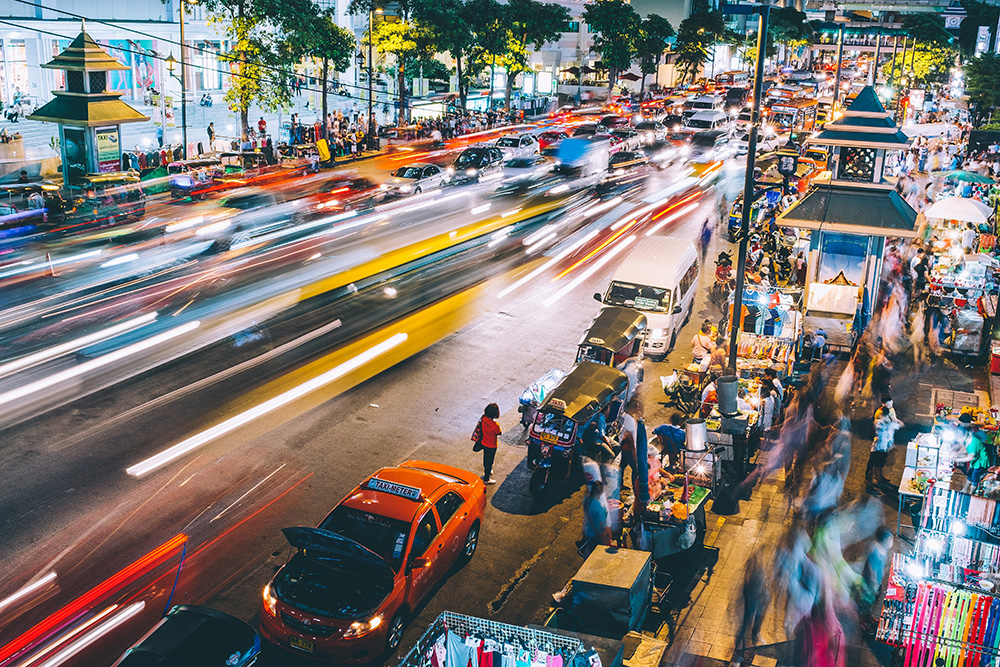
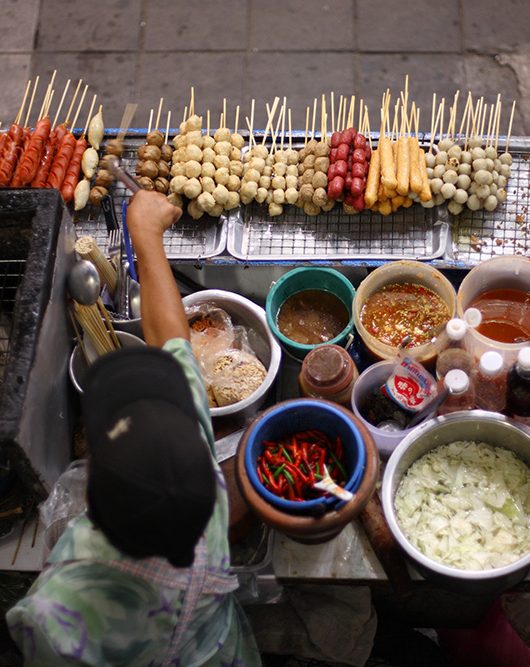
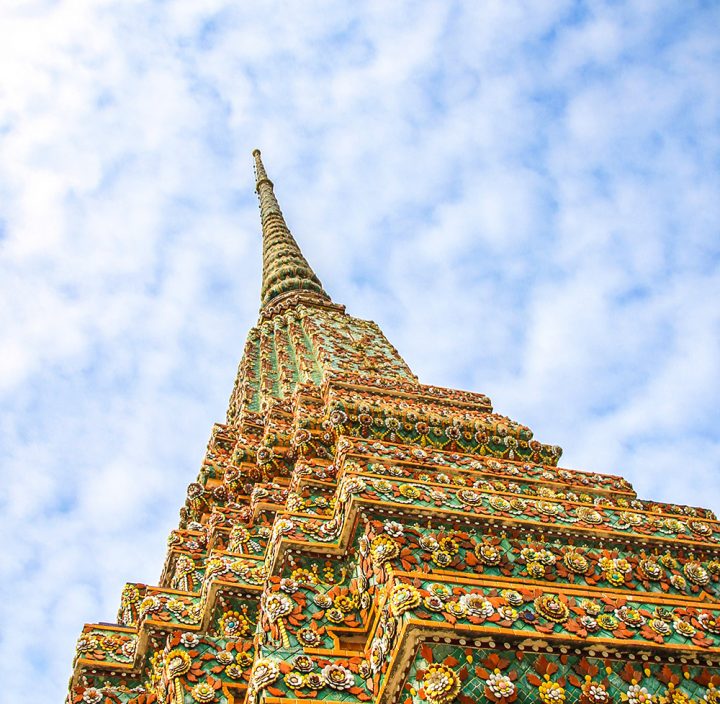
Bangkok’s Grand Palaces make for a great first stop. The palatial grounds in Bangkok were long the nerve center of the Siamese kingdom. The vast complex is full of throne halls, royal residences, and golden Buddhist temples, and nowadays most of the court and temples are open to visitors.
However, the Grand Palace and royal temple of Wat Phra Kaew can get very busy (in normal times), so consider an early morning visit, or go with a tour that has admission fees already included.
For a great taste of the vibrant hustle-and-bustle of Bangkok, go to the Chinatown district and get lost in its maze of markets and narrow alleys. You’ll see fishmongers chopping fish, welders fixing equipment, and exotic foodstuffs for sale—all amid a sea of Thai and Chinese neon signage. It’s one of my favorite parts of Bangkok.
See a different side of Bangkok
There is so much more to Bangkok than the tourist streets of Khao San! One of the best activitis is going on a longboat tour through the canals of hidden Bangkok, visiting non-touristy temples and some of the local markets.
Kanchanaburi
Relaxing riverside base for nature and history
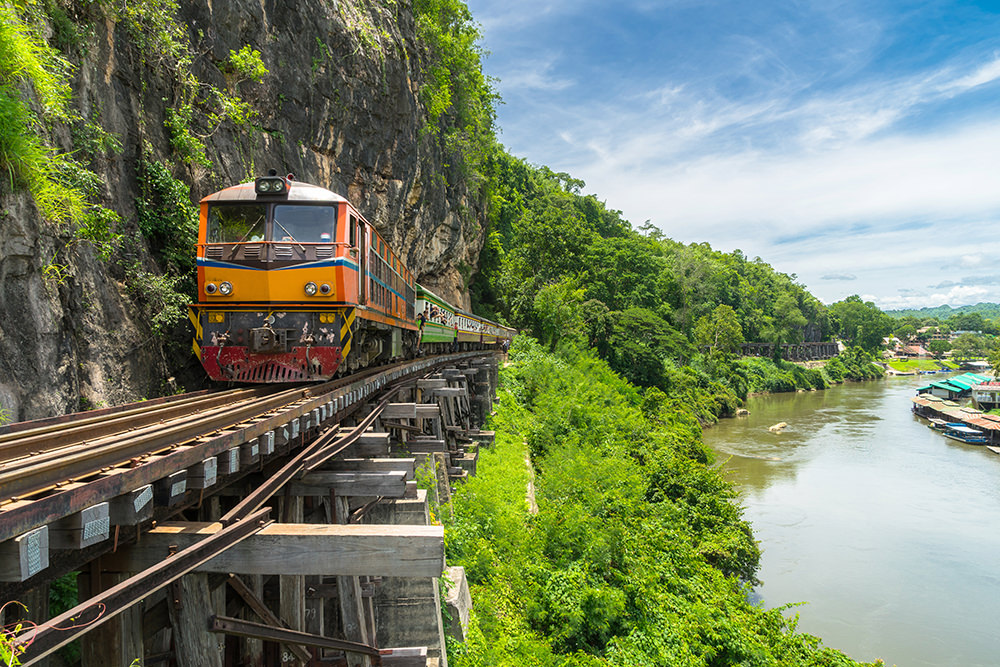
If Bangkok feels a bit much, then Kanchanaburi is the perfect place to unwind. This gentle riverside town is about two hours from the capital.
The town is famous for its railway, once built in 1943 by the Japanese during WW2. At the local museum, you can learn more about why it earned the nickname of the ‘Death Railway’. Despite its dark past, today the railway makes for an enjoyable ride passing cliffs along the river and crossing the famous Bridge Over the River Kwai.
Kanchanaburi is a chilled-out town with a small traveler scene. Relax by the river, stroll the local food markets, or rent bicycles to explore the tranquil countryside.
Consider taking a tour to nearby Erawan National Park, one of Thailand’s best-protected nature areas and home to gorgeous waterfalls. For more ideas, take a look at these 33 things to do in Kanchanaburi.
Ayutthaya
Ancient Thai capital near Bangkok
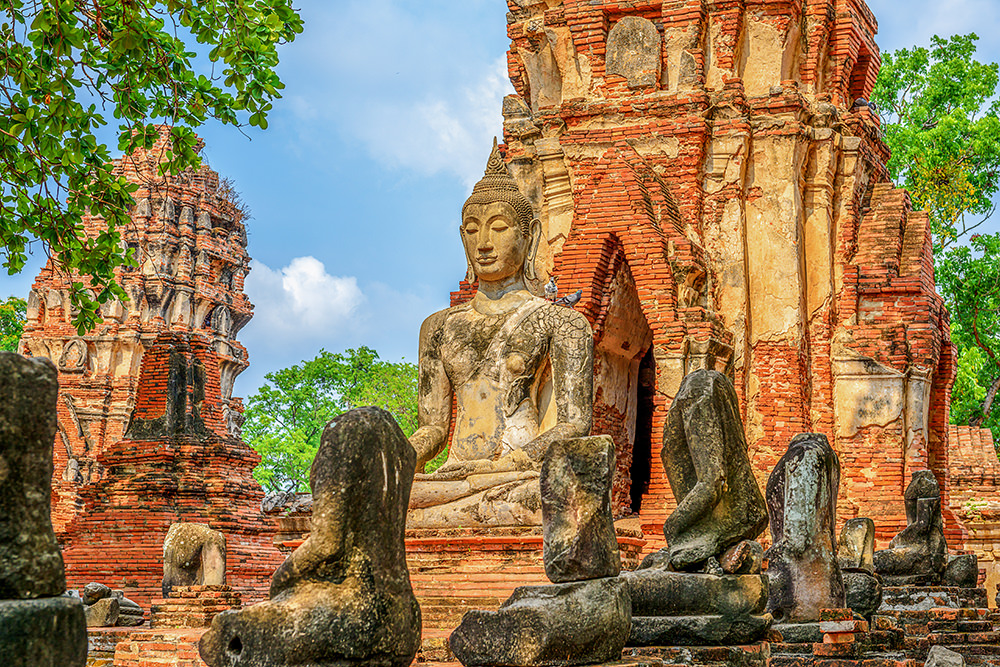
Founded in 1350, Ayutthaya was once the second capital of the Siamese Kingdom (after Sukhothai). The historic city of Ayutthaya is now a UNESCO-recognized site that encompasses many ruined ancient temples and palaces.
Ayutthaya is a popular day trip from Bangkok as it’s not too far from the capital. However, as this blog shows, it can also be a great place to stay a night or two.
Lopburi
A town taken over by monkeys
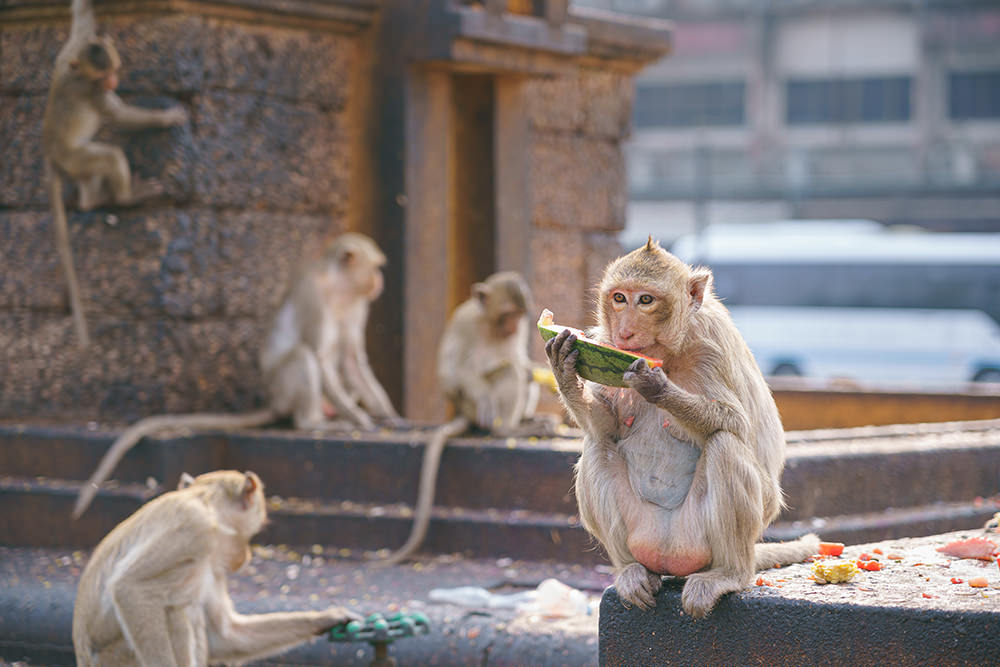
Lopburi is a historic city about 2 hours from Bangkok. It gained notoriety in recent years for the ever-growing colony of macaques that has overrun the town.
They are based out of an abandoned cinema but can usually be seen roaming around the Prang Sam Yot temple in the old town. They are a fun attraction but beware: they can be a little aggressive!
Besides the monkeys and several Khmer-style temples, there arguably isn’t that much else to do in Lopburi, so most people visit only on a stopover on their journey from Bangkok to the northern capital of Chiang Mai. Some stay the night in order to enjoy a bit of a real Thai city, while using it as a base for a day trip to Ayutthaya, or to explore the nearby countryside which is covered in sunflowers from November to January.
With the monkeys becoming increasingly aggressive and stealing food, it’s a question of how long they will remain in Lopburi. Local authorities now have a plan to relocate them, so if you’re keen to see the monkeys be sure to check if they’re still in the city by the time you read this.
Koh Chang Archipelago
Oft-overlooked islands near Cambodia
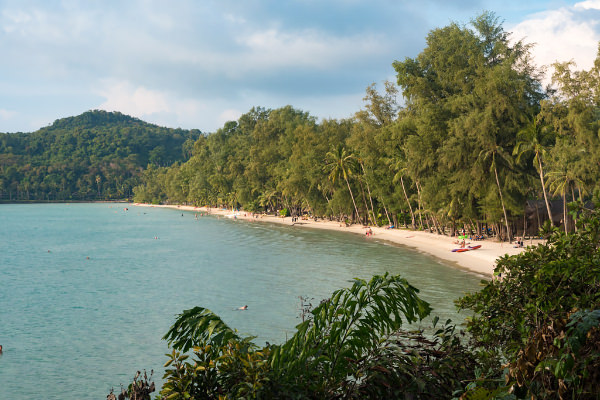
Most people go to Thailand’s southern islands, like the ones mentioned later. But Thailand also has a third island group in the center off to the east, near Cambodia. Depending on your itinary, the Koh Chang Archipelago may be a bit out of the way, but that’s also part of what makes it rewarding to visit.
Koh Chang, the largest island, gets its share of resort tourism, though it also has a thriving backpacker scene. Not all of the beaches are sandy (some have rocks or pebbles) and the island’s large interior is mountainous and covered in jungle, which can make it still feel a little wild. There are plenty of quiet spots, and it’s a perfect island for hiking.
Koh Kood (a.k.a Koh Kut) is very picturesque and unspoiled. It’s mostly the domain of some isolated resorts, but it’s also possible to be an independent traveler on Koh Kood and stay in a local B&B or guesthouse. This very quiet island is best for doing nothing at all. Ferries to the islands depart from the town of Trat, which is about 5 hours by bus from Bangkok.
Northern Thailand
This part of Thailand is more mountainous, has cooler temperatures, and is more relaxed. With its misty mountains and lush valleys, the region is popular for jungle trekking and visiting indigenous hill tribes.
The main city Chiang Mai has super low prices and an easygoing atmosphere, making it a great base from which to explore. The province also has some small mountain towns where you can kick back and relax, such as Pai or Chiang Dao.
Northwest of Chiang Mai is the Mae Hong Son province, Thailand’s least populous region. For a great road trip, you can rent some scooters and ride the Mea Hong Son loop through these tranquil backwaters of Thailand.
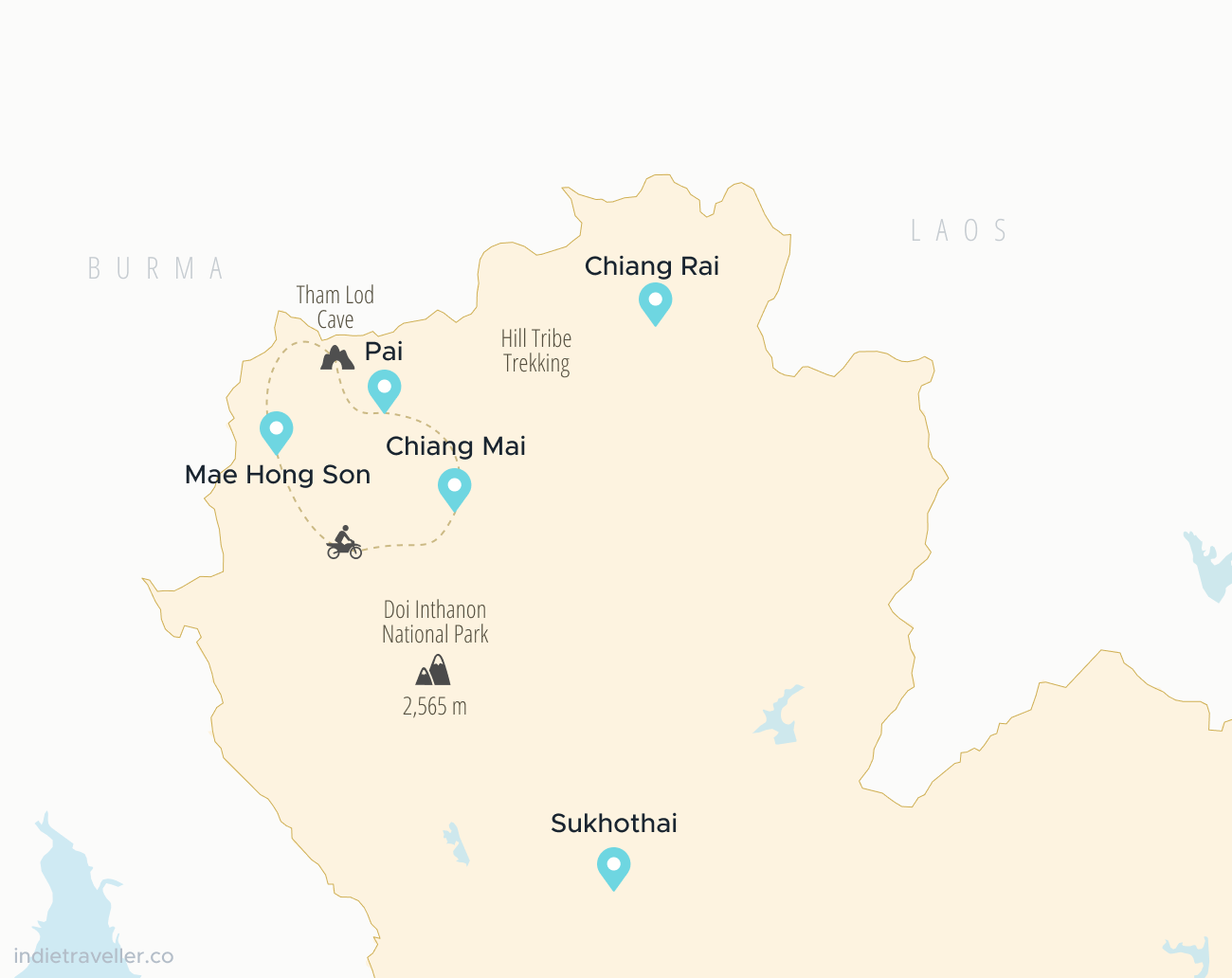
Chiang Mai
Largest city and cultural hub in northern Thailand
Chiang Mai is the gateway to northern Thailand, a city with a population of over 1 million (in the metropolitan area) but with a pleasant and calm atmosphere.
If Bangkok was a bit much, arriving in the comparatively green and quiet Chiang Mai can be a literal breath of fresh air.
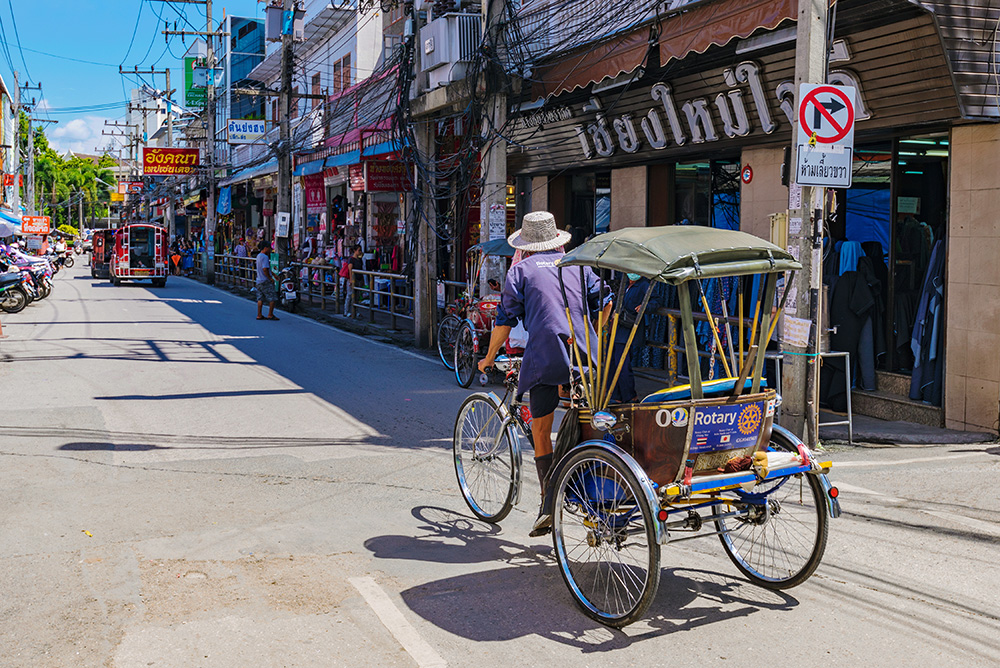
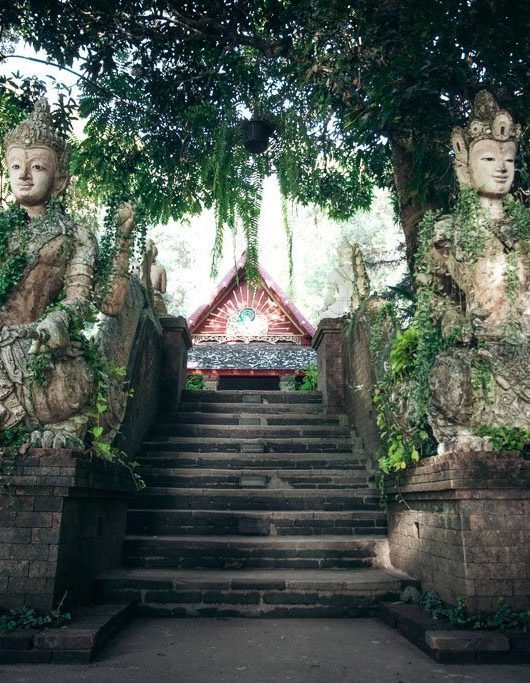
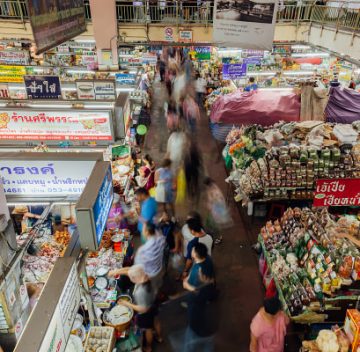
It’s a city with many interesting things to do, so you may wish to spend at least 2 or 3 nights there, though plenty of visitors stay longer. Besides the many temples, food markets, and other attractions within the city, Chiang Mai also makes for a great base for heading into the surrounding mountains and countryside.
Popular trips include jungle trekking, ziplining, Thai cooking classes, and cruising down the Mae Ping river in a small wooden boat, stopping by small riverside villages with traditional teak houses.
As one of the cheapest developed cities in the world, Chiang Mai is popular with tourists but also expats and digital nomads staying for months at a time. This lends the city a certain cosmopolitan feel, despite being a provincial capital.
If you’ve come to Thailand for the culture and nature, then Chiang Mai will be the perfect launching pad for exploring the north.
Sukhothai
The ruined capital of the Sukhothai Kingdom
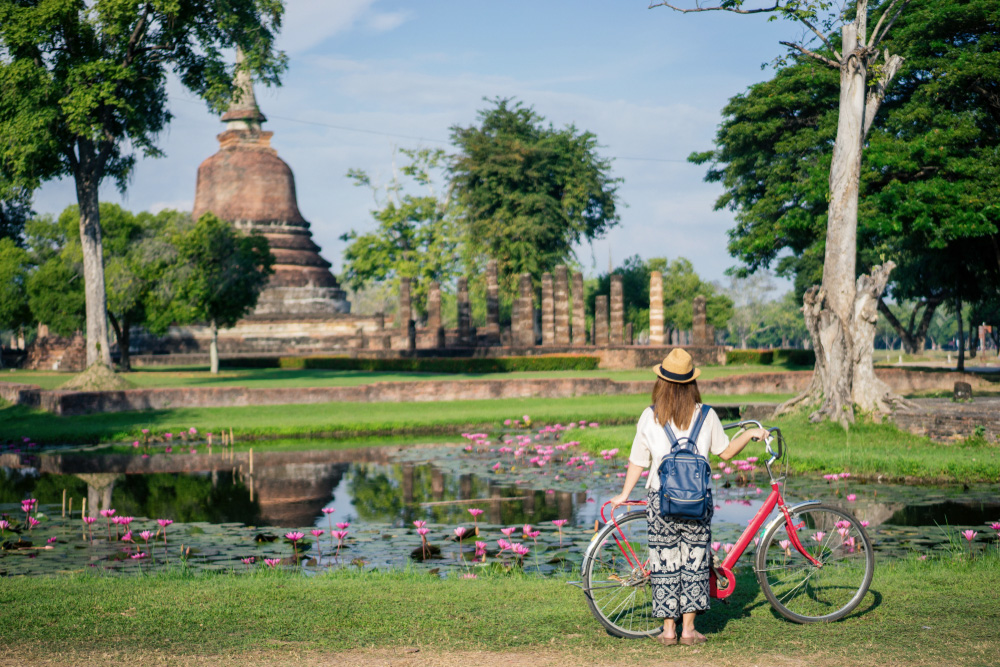
Sukhothai is a small city in the center of Thailand, roughly halfway between Bangkok and Chiang Mai. Its main attraction is the ruins of the ancient city Sukhothai, once the capital of the Sukhothai Kingdom in the 13th century and now a UNESCO World Heritage Site.
What makes this site different from Ayutthaya is that the ruins are spread over a very large area — a total of 70 km² (~27 square miles) — making it feel much less crowded. The perfect way to explore the historical park is to rent a bicycle.
Pai
Hippie-like town in a picturesque valley
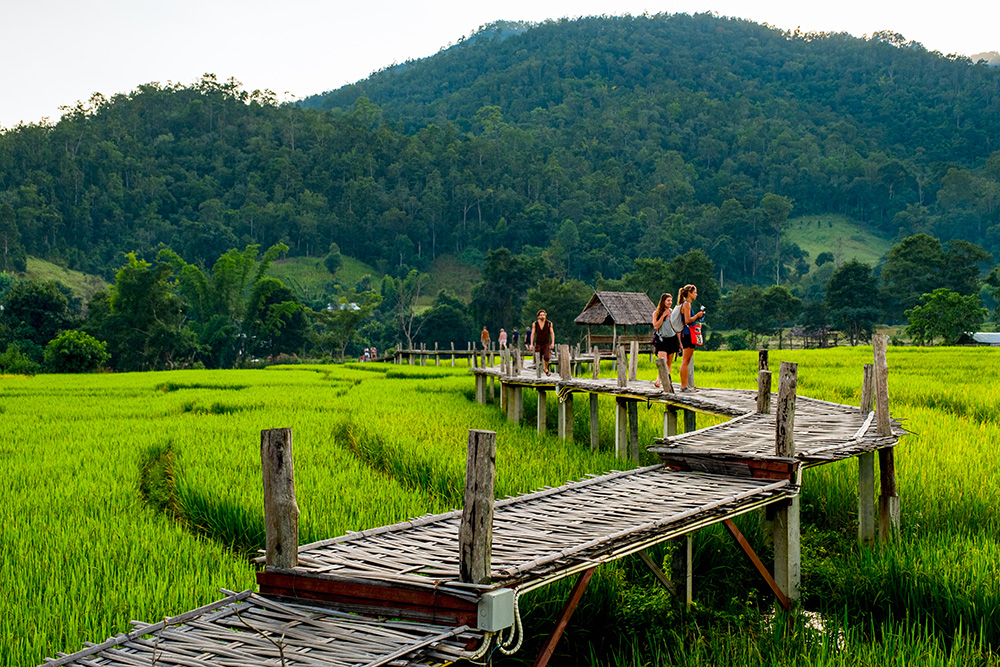
Pai is a small town (population 3,000) about a 3-hour drive from Chiang Mai. Once a hippie hangout, it gradually evolved into a laidback tourist town filled with bars, tattoo parlors, hostels, and all manner of restaurants — serving anything from traditional Thai to Mexican wraps and açaí bowls.
Some say that Pai isn’t very Thai. I mean, that’s a fair point. Off the beaten track it definitely isn’t and most businesses are there for tourists.
But it’s best to simply enjoy Pai for what it is and settle in one of the backpacker hostels or cute bamboo cottages by the river. Although it can get busy during high season (Oct-Feb) it maintains a gentle character thanks to its small-scale development. Its scenic location among rice fields and jungle-clad mountains lends itself well to exploring by bicycle or scooter, visiting nearby hot springs and waterfalls.
Our contributor Jade spent several months living in Pai and wrote this useful guide to the best places to stay, eat, and the best things to do.
Chiang Rai
Northern city on the way to Laos
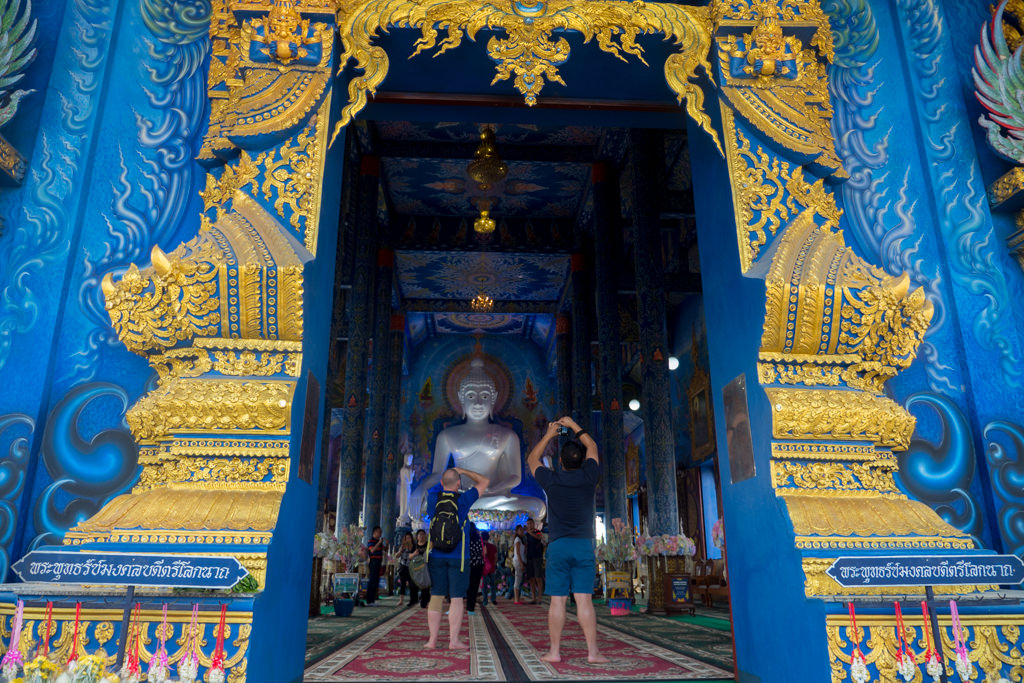
Chiang Rai is a city about a fifth the size of Chiang Mai, located near Thailand’s northern borders with Laos and Myanmar.
While it was once a little off the beaten path, new flight connections to Chiang Rai have unlocked tourism to this city. Several unusual contemporary Buddhist temples make for the main attractions. There are also some gentler attractions in Chiang Rai, such as the mountaintop town of Mae Salong, or hill tribe treks into the nearby national parks.
If you have limited time and you’re not sure where to go in Thailand, then maybe you’ll want to focus on Chiang Mai first. But if you want to see more in the north, or you are on your way to Laos, then Chiang Rai makes for a perfect stopover.
Chiang Dao
A quaint town off the beaten path
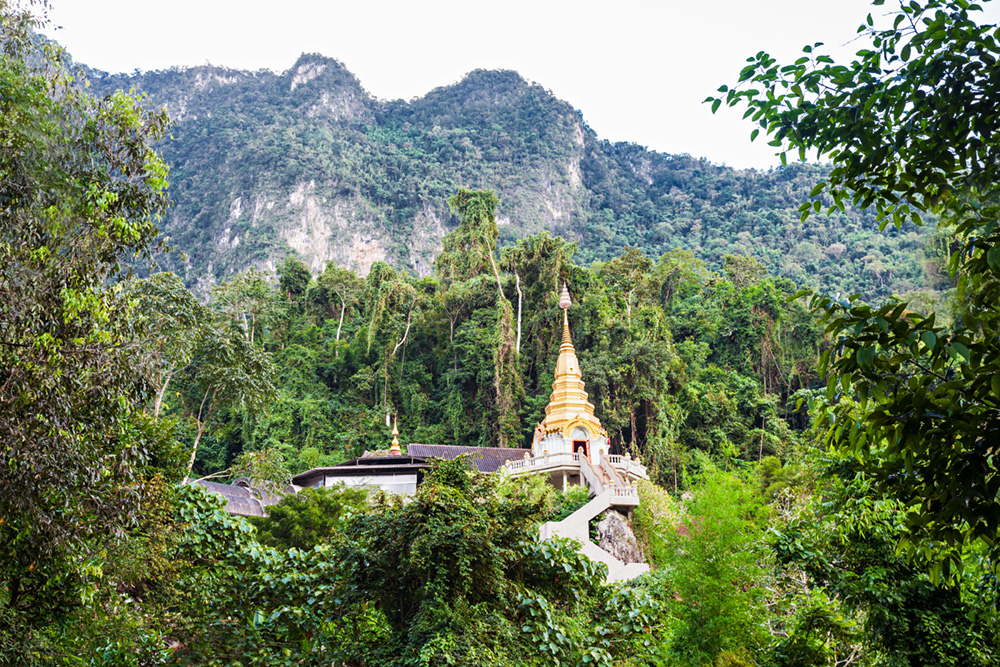
If a town like Pai feels too touristy, then something like Chiang Dao might be more your jam.
It’s not the biggest or best at anything, which happily keeps the masses away, but with its cute bungalows, green hills, and small temples and caves, it’s a delightful slice of rural Thailand. If you’re looking for a more authentically Thai town to stay, then this is it.
Our guide to Chiang Dao will tell you much more. It’s also possible to visit Chiang Dao as a day trip from Chiang Mai.
Mae Hong Son
Remote province perfect for a road trip
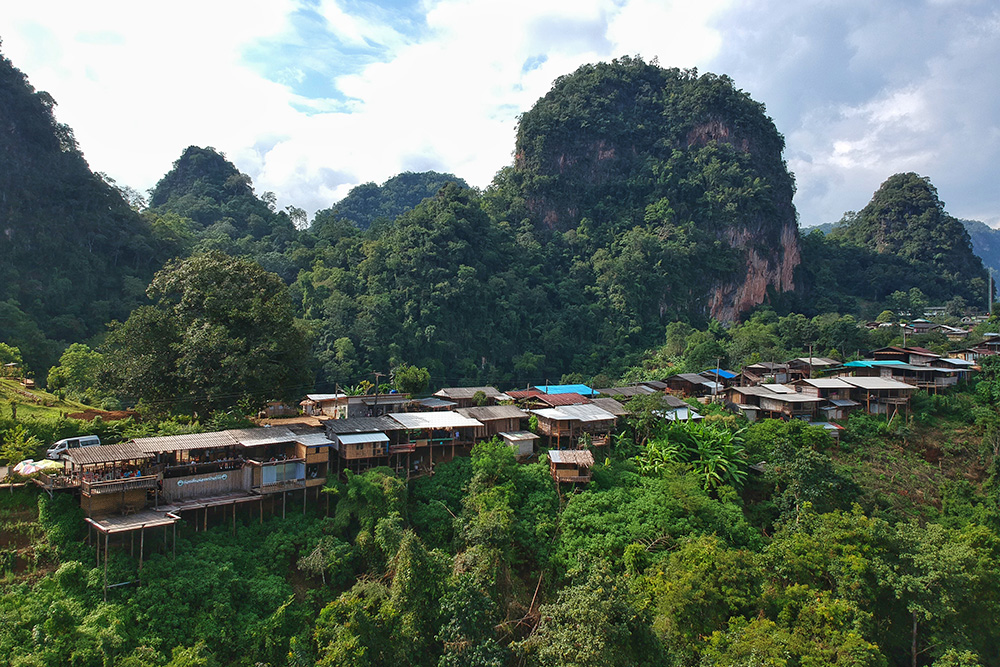
The northwest province of Mae Hong Son is one of Thailand’s least populated and most ethnically diverse.
The best way to explore it is to rent a scooter or motorbike in Chiang Mai, typically costing under $10 per day, then riding all your way around the Mae Hong Son Loop, which takes about 4 days minimum.
Several places make for ideal stopovers, including the tourist town of Pai described earlier, as well as Thai towns such as Mae Rim, Mae Taeng, and Mae Sot. Along the way, you can visit numerous temples, stay at an ethical elephant sanctuary, and explore the epic cave of Tham Lod (don’t miss the sunset spectacle of thousands of swifts flying into the cave entrance!).
The town of Mae Hong Son, with its mountain lake and breathtaking views, really is a jewel. Along with the local northern Thai, peoples from various minorities reside here or close by. Shan, Karen, and Hmong can all be found here and are easily distinguished because of their looks and traditional dress.
The Mae Hong Son Loop is perfect for those looking for a deeper exploration of Thailand, or just to stay in gentle riverside towns and gently falling asleep to the sounds of the jungle.
Southern Thailand
The south of Thailand is all about the beaches and islands. There is seemingly an island for every type of traveler, whether you are looking for comfort and luxury, or to swing in a hammock in a reggae bar, it’s all there.
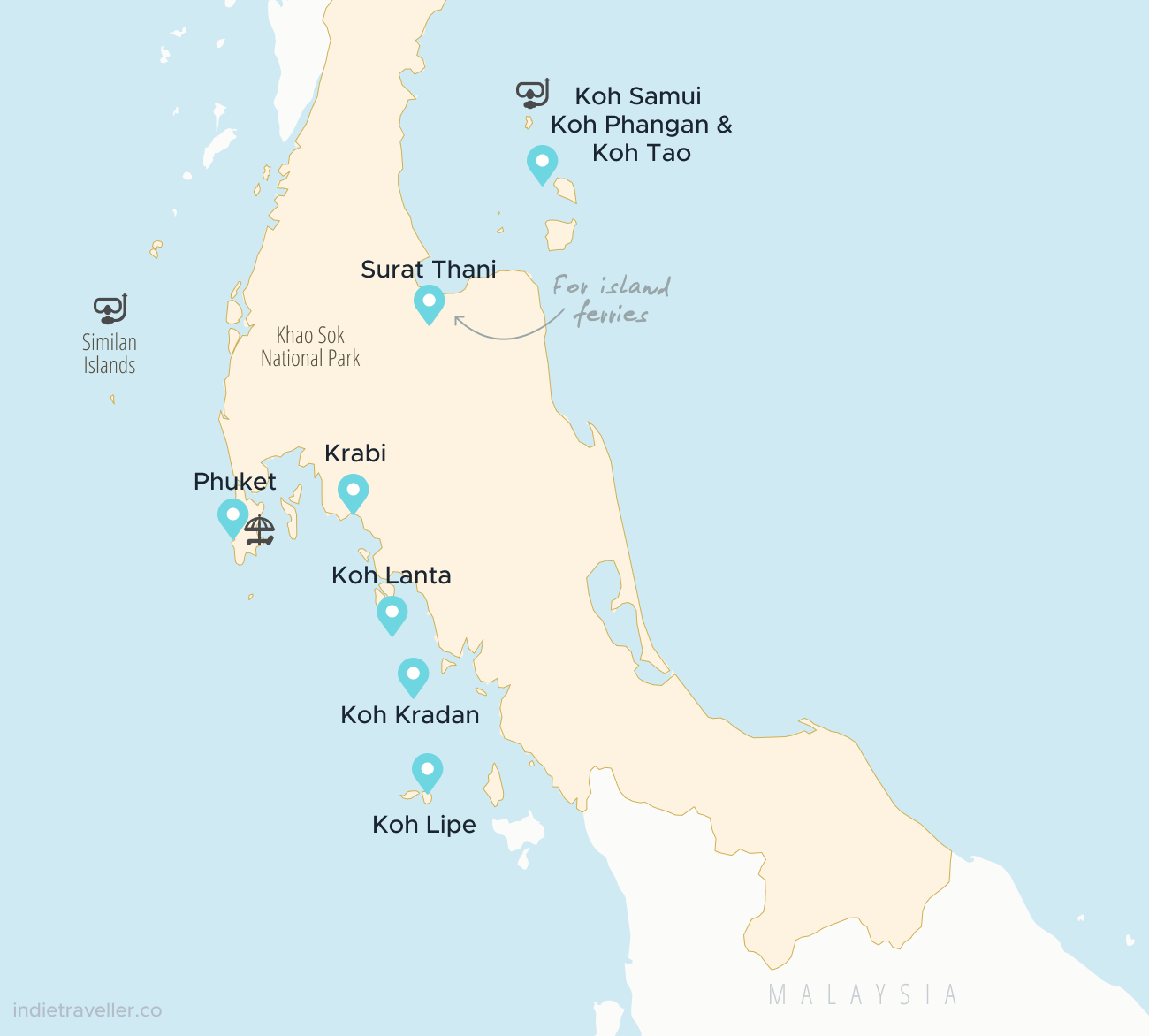
The west coast along the Andaman Sea has some of the most developed resorts in Thailand, with Phuket focused mainly on sun-seeking package holidays. Phuket (and the city of Patong) maybe aren’t the most exciting places to be for an independent traveler. Tourism there is rather massive-scale, though it is convenient if you’re just looking for a lazy well-catered beach holiday. Since it’s such a large island, you can always find some nice beaches.
Still, if you’re traveling around Thailand instead of on a resort holiday in a fixed location, then the coast of Krabi and Khao Sok National Park are better places to visit in the south — as do the islands of Koh Lanta, Koh Lipe or Koh Kradan, which are perfect for island-hopping.
The east coast of Thailand has fewer islands, but thanks to a shorter monsoon they can be enjoyed almost year-round. Koh Samui has its own airport and is mainly home to upmarket holiday resorts. Koh Phangan and Koh Tao are more popular with backpackers, digital nomads, and scuba divers.
Pro tip: the word ‘Koh’ means island in Thai. It’s pronounced like in the first part of ‘copy’, not as in ‘coworker’.
Krabi
Southern coast famed for its limestone cliffs
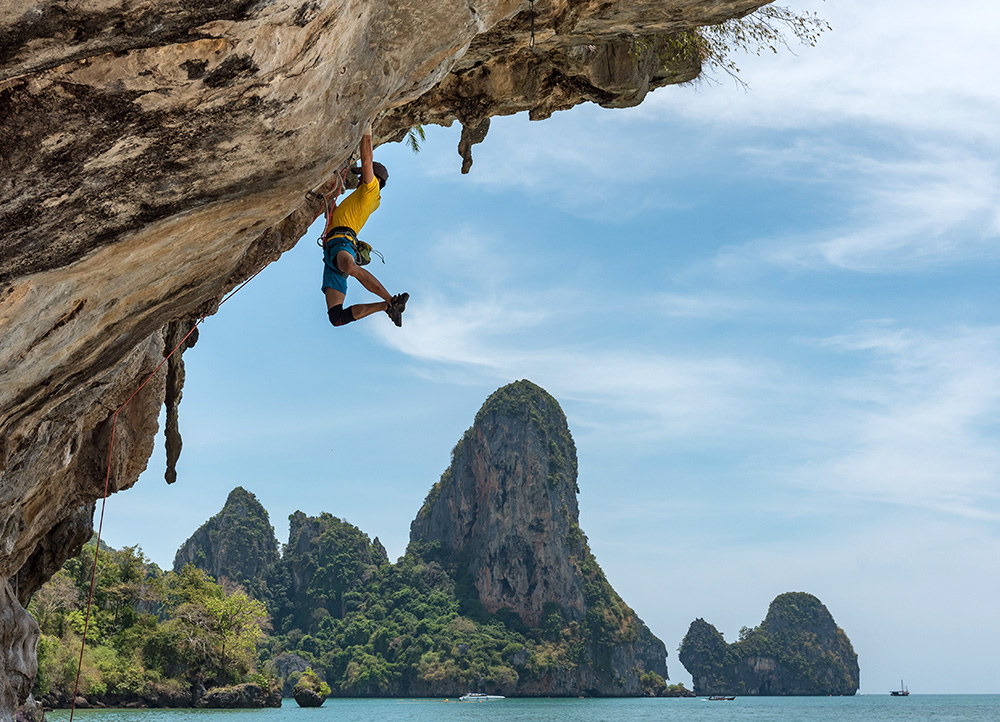
The province of Krabi is famed for its beaches fringed by tall karst cliffs. Some of the most iconic of these are Ao Nang beach and the beaches of Railay (or Rai Leh), a peninsula reached only by longtail boat from Ao Nang.
The beach of Railay itself has only high-end resorts, but you can still find some medium-budget options if you look well enough. Since Railay beach is getting increasingly busy, consider staying in Ao Nang or Krabi (where there is more space and more accommodation) and taking a day-trip to Railay.
The scenery is impressive and worth seeing despite the crowds — be sure to climb up to the lagoon and viewpoint. The area is also world-famous for its rock climbing, with introductory courses and equipment rental available in Railey, Ao Nang or Krabi Town.
Khao Sok National Park
Lakes and jungles filled with impressive limestone peaks
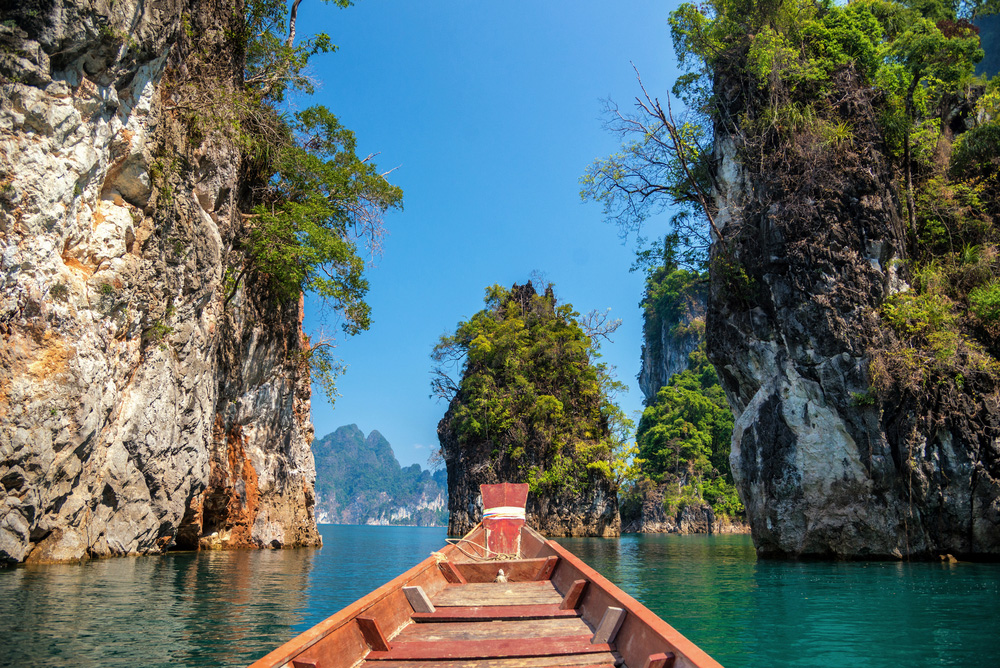
Khao Sok is a wildlife reserve in the south and easily one of the best places to see in Thailand.
It’s a spectacular park, featuring lakes with floating bamboo houses, and limestone karst often rising from the jungles. Spending some time here on a 2-day (or longer) excursion is a great way to add some adventure to what will inevitably be a very beaches-and-islands focused part of your trip to the south.
There are several trails from Khao Sok village that you can walk independently, though most of them technically require a guide. Organized tours are a little easier in practice and often include additional activities such as kayaking, bamboo rafting, caving, ziplining, wildlife spotting, or overnighting in the jungle. You can easily book tours from most guesthouses and locations in Krabi.
Thailand’s Gulf Islands
Koh Samui, Koh Tao & Koh Phangan
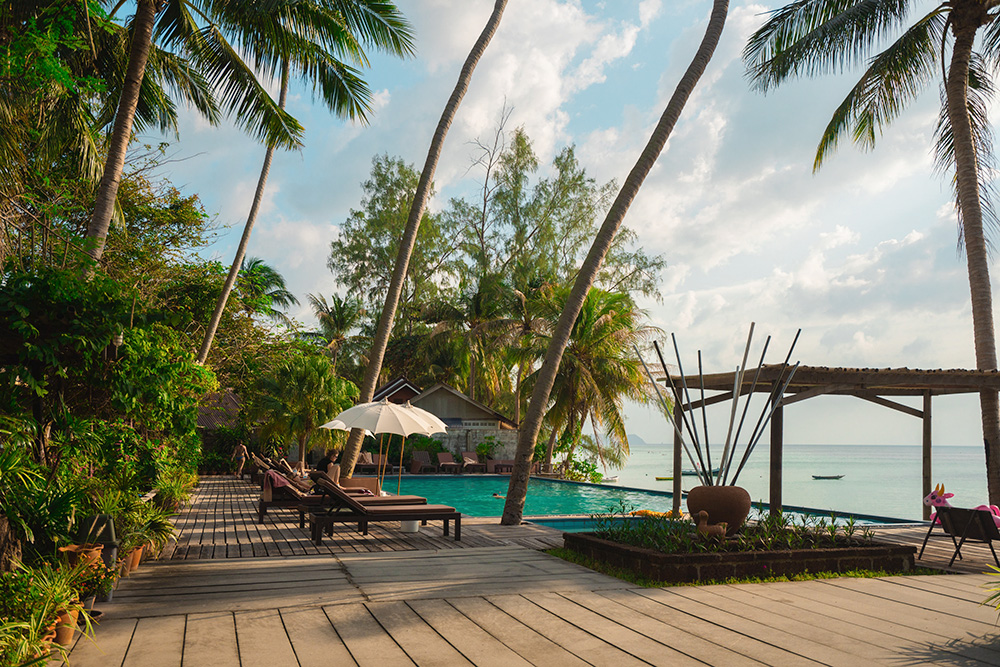
A trio of islands sit in the Thai Gulf, each with a different character. Ferries from Surat Thani can take you to each of the islands.
Koh Samui is the largest of the three and has its own airport. Backpackers often consider this island ‘dull’ or ‘too expensive’, though it’s the best place for finding upscale resorts, luxury hotels, and clean beaches. Many of those who come to Thailand for a resort experience rate Koh Samui higher than the more mass-market oriented Phuket.
Koh Phangan tends to get pigeon-holed as a party island because once a month it is host to Full Moon Party, which once began as a psychedelic hippie beach bonfire but since grew into a massive event attracting tens of thousands of revellers. It’s a classic on the Thailand backpacker circuit, but the festival area of Haad Rin represents just a tiny slice of the island. Go west or north and you’ll find some of the best Thai beaches and small-scale resorts and beach bungalows.
Koh Tao meanwhile hosts the largest concentration of scuba diving schools in Asia (and quite possibly the world), with high competition resulting in unbeatable prices. If you ever wanted to become a certified SCUBA diver, it’s one of the most convenient places to do it. The reefs aren’t the best if you’re already an experienced diver, but beginners can see many fishes, rays, and sea turtles in calm waters.
Thailand’s Western Islands
Koh Lanta, Koh Phi Phi & Many More
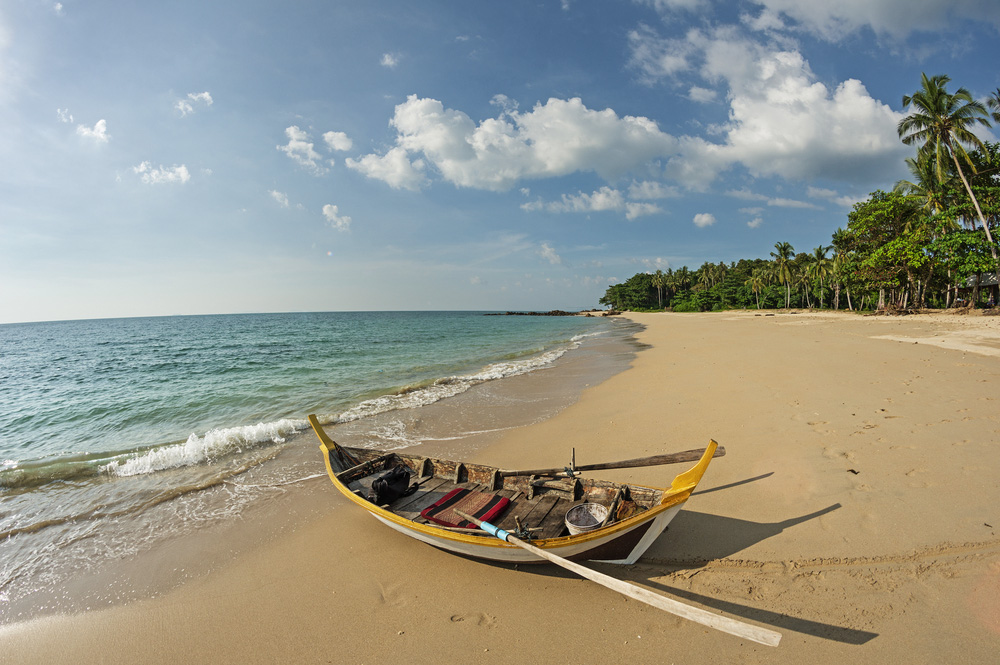
The Western islands have been less visited by yours truly, though one highlight is surely the island of Koh Lanta. It has a mix of family-friendly beaches, scuba diving resorts, and a few social backpacker spots. If you’re looking for a larger island that has lots to offer but doesn’t get too crazy, then staying on Koh Lanta is a great choice.
The island of Phi Phi is objectively stunning but arguably became a victim of its own success, with its crass party scene and over-commercialized development. Some people say I’m being unfair to Phi Phi, so you should make up your own mind, but it’s telling that the island has disappeared from influential travel guides’ top 10 lists in recent years. The nearby Maya Bay had to be closed in 2019 due to overtourism.
Luckily there are numerous other islands on the Western coast, including Koh Phayam, Koh Similan, Koh Kradan, Koh Lipe, and many others.
More Thailand guides
These are just some of the top highlights in Thailand. There is always much more to discover! Don’t miss my Thailand itineraries for more specific suggestions for tours, accommodation, and how to get from A to Z.
You’ll also want to read our guides to Bangkok and Chiang Mai, the two most popular cities to visit.
And if you’re a backpacker, start with our guide to backpacking in Thailand, which will have some specific tips for you.
Some links may be affiliate links, meaning I may earn commission from products or services I recommend. For more, see site policies.
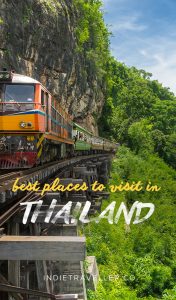
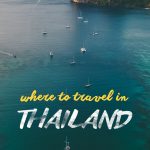
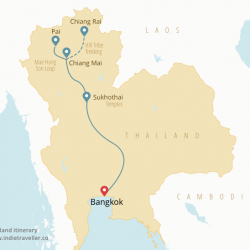
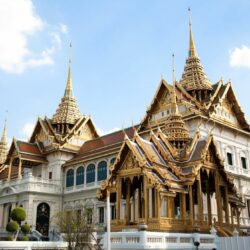
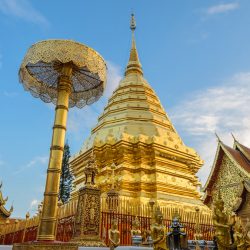
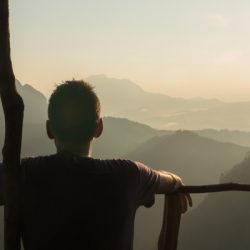




You have some excellent tips, I have been visiting Thailand few times a year for the past few years and still amazed how much it has to offer. Also picked up few points for my next rip. Thanks
your article really makes me put Koh Tao in my top 3 destinations for next year! I have a friend who recently spent 3 weeks in Thailand and went diving in Koh Tao as well, she absolutely loved the Sail Rock (https://dive.site/explore/site/sail-rock-OZNE) and generally the whole island. she also fell in love with the food there and just remembering her food pics makes me crave it soooo badly!
I spent two months this year in Thailand and I already dream about going back there. I focused on the Nothern part of the country last time so I sill have all the beautiful islands to explore. This could be my plan for upcoming January… 🙂
Thanks for the tips!
Hi Marek, really love this post and your blog in general. I’ve just spent a month in Thailand and I felt that it wasn’t enough time and this post backs that up! Will have to return in the future!
Hi Marek!!! Your blog it’s being my guide for days since I found it….Congrats! It’s amazing… I’ll be travelling on January, and I’d like to give more time to temples and ruins instead of the beaches… I’d like to go to Sukhothai, and I’m thinking it would be a ood choice to get there from Chiang Mai….before going to Angkor Wat and get further away. What do you think?? What would u do in terms of public transport??? I’d appreciate so much your response… Thanks for all the info you share with the world…So grateful!
Valeria
Hey Valeria. Yeah, Sukhothai is definitely worth it 🙂 There are plenty of buses going from Chiang Mai. Takes about 4 hours if I recall correctly.
Hi Marek, I plan on travelling to Thailand and staying for a month sometime around December. I’ve never been before so this is a great itinerary to keep in mind. Thanks!
Glad it’s helpful!
Hey! I know that this is a tough question but I only have one week to explore Thailand (plus an additional 3 days in Bangkok) and I was wondering what do you think is the best way to split my time? What would you recommend doing in just one week?
I always struggle to answer this question! I usually have the luxury of more time available.
It depends on what you like. If you want to focus on culture, nature, temples, etc. then you might as well spend that whole week in northern Thailand – e.g. around Chiang Mai, Chiang Rai and Pai. There’s just loads to see and do there.
If you want to include some beach time as well, then maybe spend 4 days in Chiang Mai and go to, say, Koh Phangang for 3 days (which is easily reached by flight from Bangkok to Koh Samui, then ferry).
You have some excellent tips.
I lived in Bangkok for 14 years (just left last year) and can’t wait to get back, as I miss just about everything about the country, the food, the culture and, of course, the amazing Thais 🙂
Marek- thanks so much for this guide. Visiting my brother who lives in Beijing and we’re flying down to Thailand for 10 days. Not a ton of time obviously, but we’re adventurers and want to fit in what we can. Given the time constraint, do you definitely recommend flying to those destinations? How easy is it to navigate those airports in Chiang Mai and the other smaller areas?
Again, this guide is the bomb, thanks!
Thanks Eric. Yes, flying is a good idea if you don’t have that much time. Don’t worry, smaller airports like Chiang Mai, Phuket, Koh Samui, Krabi, etc. are very easy to deal with. They get loads of international visitors and they’re really no different from other airports you may have been. 🙂
Great summary! This seriously inspires my wanderlust and gives me the urge to return to Thailand! How fascinating is the Muay Thai kickboxing?! We went to one in Chiang Mai and they even had ‘blind’ fights with eye masks on!
Hah that’s awesome! I definitely love the Muay Thai, and especially how worked up the crowds get. 🙂
Have you ever been to Chumphon? Really enjoying how quiet and untouristy it is. Close to some islands, parks and beaches so there are things to do and see. We were unsure of the area, but are really glad we gave it a shot!
I haven’t yet been, but good tip!
I like the new menu system you have at the top. A good improvement!
Wow Marek that’s really helpful guide for Thailand. I’m glad that you have spent your time to write this wonderful guide.
However, I just want to add something. I went to many blogs about guide to Thailand. None of them talks about the festivals in Thailand. For me, some of the festivals itself can be the main reason you want to visit Thailand.
Right? I mean sometimes people just went to Spain just for the La Tomatina.
Anyways, I have written down some the festivals in my blog. I hope maybe this can be a factor when you plan to visit next time.
http://tiewwithme.com/2016/10/17/thailand-festivals-dont-miss/
Hey Marek,
Fabulous blog. I just booked my Thailand trip for 6-14 November. Unfortunately, I read about the king’s death recently. I believe the clubs/bars/markets will be shut now. I plan to chill, shop and a bit of partying. Some of my hotel bookings are non-refundable. What do you suggest I do? I’m a bit panicky. Thanks in advance.
It’s hard to say without knowing more about your expectations for the trip, but personally I would still go. There’s some useful info from the Thailand Tourism Authority here. Some more info here. The mood may be more subdued but tourists are still welcome.
Hey Marek,
We love your blog and wanted to share an app that food lovers might find helpful on their next trip to Thailand. It’s called Travel Iago (www.traveliago.com) and it’s kind of like Tinder for food. It is packed full of local dish options to swipe through, and you can even apply your personal preferences to ingredients and flavor choices. Anyway, check it out. I’m sure you will love it! http://www.traveliago.com
hey, me and a friend are planning on going to vietnam and cambodia in october and i was just wandering, how bad is weather in thailand in october for doing snorkelling elephant riding and other beach activities. just because we were hoping we could fit thailand in as well .
thanks
October is apparently a bit of a lucky draw with the weather. I was in Thailand in October and while there were a few rainy days, it was mostly very sunny and nice. If you have enough time on your trip you can take your chances, otherwise maybe aim for September or later.
BTW elephant riding is typically not recommended from an animal welfare point of view – might want to read something about this before deciding to do this activity.
If you are traveling as an independent traveler, the North East of Thailand is the most authentic area. Much cheaper than other areas and truly beautiful. There are so many things to do in the area where we live around Nong Khai, including The Sculpture Park only 7 km away, The Historical park 60 km away where people lived 3500 years ago, The Mekong River, and Giant Cat Fish…
10 days of thailand in 5 minutes: https://m.youtube.com/watch?feature=youtu.be&v=OnMplejKwsI
Great video!
Congrats for all the info you posted here! My friends and I are planning to go to Thai on August, so we were a bit scared mainly about the weather…
For sure we’re gonna follow some of your advices, thank u so much!!
Come 2 days to teach English to novices at a temple, Monday and Tuesday, as a volunteer, in our city Nakhon Si Thammarat. You don’t need to be a native speaker of English but just be reasonably fluent and have a clear accent. We provide free breakfast, lunch and transportation. Like this you can experience real Thailand. Respond to this comment if you are interested.
Hey Dan!
I am interested!! Can we connect? I will be in Chiang Mai soon and can go after that. Can you give me some details?
Hey, I am interested in teaching the kids too, I will be in Thailand from 20th June to 27th June 2017. Could we connect please?
I’m gonna visit Thailand by the end of 2016, and I’ve heard that their waterfall sceneries are beautiful, any tips on that. I’m very interested in aquatic nature, so cna anyone tell if it would be worthwhile organizing a trip around Thailand only to see waterfalls (i.e. are they that good)?
Thank you for such a wonderful guide! I’m just starting to think about a trip to SE Asia and this is full of incredibly useful information to come back to. Much appreciated!
Hi I want to visit Thailand for 15 days. Can you suggest a good itinerary which includes: BKK, Chiang Mai, Pai, Chiang Rai and the Andaman Region? is it doable? flights from BKK to Krabi is okay.
Thank you, thank you, and thank you for this! very helpful blog
Wow this is such a great comprehensive list. It definitely gives Fodor a run for their money (is that the saying?). And yes to the food part!! I always include eating at street carts as part of the tips I give my family and friends.
I can totally recommend Rainy’s Tourist and Taxi services. We’ve been in Phuket Thailand many times and only used Rainy’s travel services, she speaks very good english and is friendly woman. Also this year we will definitely be using her services, which are very much cheaper than tourist offices provide. It’s so good to find someone you can trust.
Contact info: Rainy mobile: +66843073993 or +66887541237
email: rainyphuket@yahoo.com
Love this post, it has almost every tip that a first- timer would be looking for. I loved Pai.
Just noticed you linked to my Full Moon Party article… glad you liked it! This is an awesome guide you’ve got here.
Thanks Colin!
Hi Marek, Im planning a 19 day trip to Thailand and I want to fully know the country… what places do you recommend? traveling with my wife so maybe not up for sex tourists
Hi Marek. I plan to go thailand by the end of january and early february 2015. I will flight from Singapore straight to Phuket. How many days should I spend on Phuket -> Koh Phi Phi -> Krabi? cos I don’t wanna miss the Full moon party on the 3rd of feb on Koh Pha Ngan. Thank you!~
Hi Marek. Your posts are truly informative. I’m planning to travel to Thailand for 6 nights / 7 days in dec 2014. I’ll be landing and departing from Bangkok. Which island would you suggest for a peaceful getaway? I would avoid ‘sex tourism centric’ places as I’m traveling with Better Half. We were thinking either Krabi or Koh Samui. Please suggest itinerary. Thanks.
Depends on what you’re after! Koh Samui is a very glossy and upmarket island and suitable for more of a luxury holiday. If you want something more backpackery then Krabi is worth looking into. The nearby island Koh Lanta is peaceful but still has a lot to do.
Thanks. In your post I read about rice fields and bamboo huts. Are these basic ones or luxury accommodation?
We would prefer being away from the hustle bustle so I guess John Samuel is kinds out? What about Phi Phi or Paint?
Finally, should I be taking flights from BKK any of the locations or there are ferries or trains or taxis as well?
I’m guessing your phone autocorrect has gone to town on your message 🙂 Koh Phi Phi is very much a party island, so definitely a lot of hustle and bustle there. Trains in Thailand are pretty good so if you want to take the scenic route you can do that from BKK down to Krabi region. Another easy option is to fly: AirAsia sells combination tickets that fly out from BKK and get you a connecting ferry too.
Hi, I have read all of your post about southeast asia, and they are really good.
I was wondering where you have made your orientation map? I’m trying to get something similar for Sydney, but I cannot find a nice clean map anywhere. Hope you can help me.
Huge fan of yo blog.
B/R Zandra
Finding clean maps can definitely be difficult. I create the maps myself using a vector image editor and map outlines provided by FreeVectorMaps.com. Hope that helps!
Hi,
I will go to Thailand in Dec 2014. Can anybody help me to get a idea of a short trip of 4 days how much I shall bring? S$500 will be enough? I don’t want to do any shopping, want to hop to floating market, Pattaya of course and picturesque islands..
I love to visit provinces in the northeast ( Isarn ) like Khonkaen and Sisaket. People are nice and friendly. Interesting culture 🙂
Hey man, thanks for the information. I plan on going to Thailand for the second half of February. This will be my first backpacking trip so I’ll take all the help I can get. I want to try and do this itinerary: Bangkok -> Chiang Mai -> Pai -> Koh Tao. How many days do you think I need (excluding days for international travel)?
Hi Pat. It’s always difficult to answer that question as it depends on how much you want to see! For Bangkok > Chiang Mai > Pai I would probably say a week at bare minimum if you want to spend at least several days in each place, though there’s enough to do in all of these places that you could spend two weeks or more. Transportation is another factor. Going from Bangkok to Chiang Mai will take about 15 hours by train – taking a sleeper train is a good idea if you want to cover this part of your itinerary overland without eating too much into your travel time. Backtracking down to Koh Tao is going to take you the most time, so if you don’t have that much time it might be worth checking if there’s a flight from Chiang Mai down to the islands (or first to Bangkok and then to Koh Samui, from where you can take a boat to Koh Tao). Good luck on your trip!
I loved Chiang Mai and Pai! Pai was my favorite. I would spend the least amount of time in Bangkok but I’m spoiled with NYC and wasn’t so enthralled with Bangkok… cept for the food carts. Those are awesome.
oops I realized I posted on an old comment 🙂